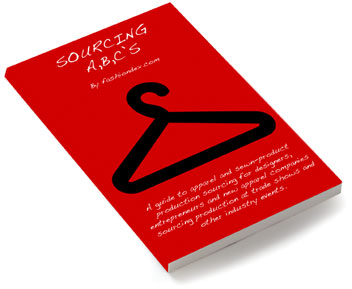
A low-minimum order, also known as a small-production lot, is often what most first orders are. When new companies source production, they generally need to find a factory that is willing to produce a low-minimum order. Many factories exhibiting at a trade show, or that you email, will state their minimums up front. Factory minimums vary, but often are 1,000-2,000 units per style or more. 2,000 units is a small order for most factories, and really are seeking orders that are larger. However, in today’s market, many manufacturers and retailers are closing and, in turn, factories are eager to find new work. So even though you are a new venture, a factory may be willing to work with you, even with a small order. A low-minimum order is generally an order that will be less than 1,000 pieces.
Factories are willing to work with smaller orders occasionally, as there is a chance that future orders will increase in size and then the factory and your company can grow together. Another reason factories at times accept a small-quantity order is when they work with new and small manufacturers they see fresh ideas. It is advantageous for a factory to say they are producing hot new lines. A factory with high minimums will accept a low-minimum order- but there will be a surcharge. If it is a well-rated factory, you should pay the surcharge. The surcharge will be per piece. When a factory advises minimums it is per style. Some factories will quote you minimums per style and per color. It is important you find out which it is. It is easier to meet a minimum of 1,000 pieces per style, and assort the cutting ticket between two or three colors, than having to produce 1,000 pieces each of two to three colors. Also, minimums per style are not per size, the minimum includes a style being produced in a size range.
An alternate route to producing small production lots or a low-minimum orders is through a Factory/Production Sourcing Agent. Factory and Production Sourcing Agents have networks of factories they work with, and many will produce smaller orders since these agents place many small orders, the factories are willing to make small runs for them. Finding a Factory Agent can be a good choice for a small or new manufacturer. This agent is a middle person, and you will pay them a percentage. The percent varies from 5% to 20% and if the agent is a good one, the additional fee is well worth it, because the agent can be your eyes and ears in the factory. Another benefit of hiring a Factory/Production Sourcing Agent is that since they work directly with the factory, it’s fewer in-person visits for you. Traveling to overseas factories really can chip away at your bottom line. Another benefit of using an agent is they know the lingo and the language. A disadvantage of hiring a Factory/Production Sourcing Agent is that other than their fee, it can add extra time to your production cycle. As first lab-dips and samples get sent to them, then they send them to you. There is always a middle step, in every step, which makes every step and production stage a day or two longer.